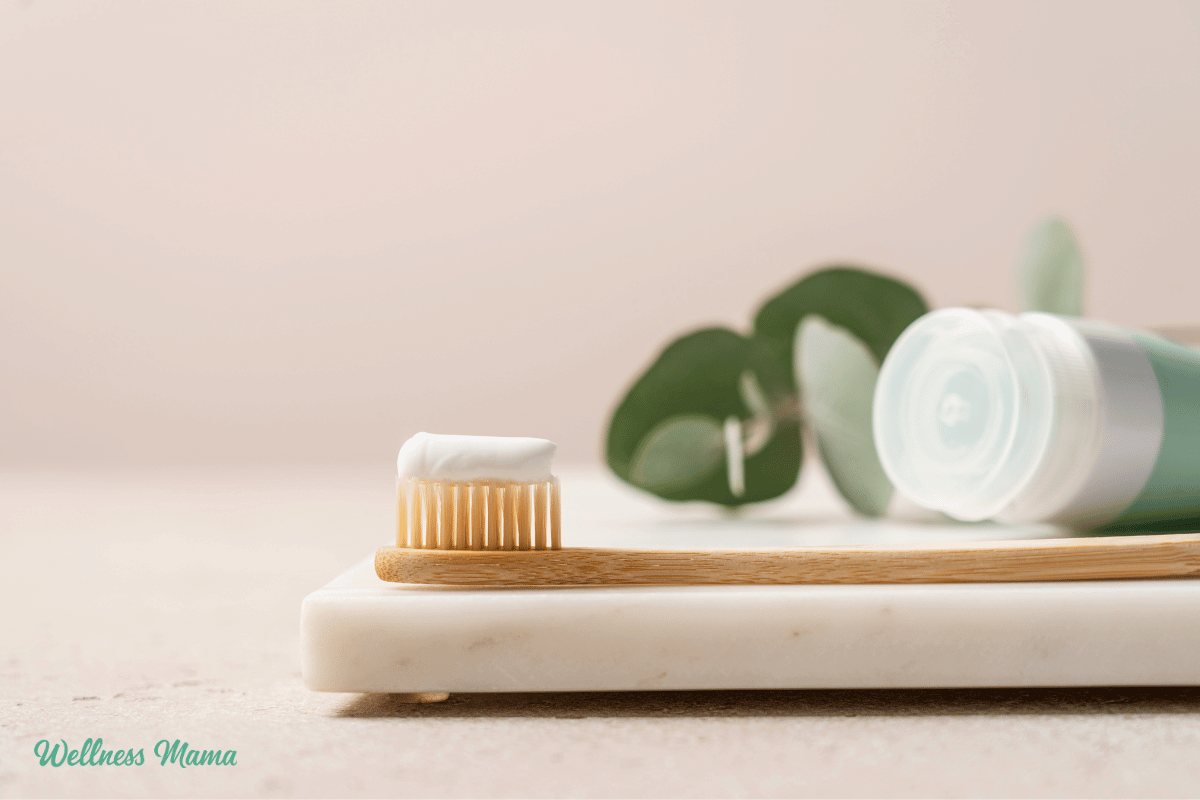For most people, taking care of their oral health means brushing, flossing, and visiting the dentist twice a year. Some people may also seek out whitening products or procedures to create the appearance of healthy teeth.
But is heading to the dentist for fluoride treatments and fillings the only way to avoid or treat cavities? From my research and experience, it is possible to remineralize teeth.
What is Tooth Demineralization?
Enamel is the hard outer layer of the teeth. It’s the most mineralized and hardest substance in the human body, even stronger than bone. Enamel plays a crucial role in protecting the inner layers of the teeth from decay and damage. However, tooth demineralization happens when tooth enamel loses minerals like calcium and phosphate.
What Causes Teeth to Lose Minerals?
Conventional dentistry says demineralization occurs when the enamel surface is exposed to acids. These acidic substances then feed on mouth bacteria, lower pH, and break down enamel. There are a few problems with that theory though which you can learn more about here.
The bottom line is that certain foods do cause tooth decay, but not like we’ve been told. Traditional cultures didn’t even own a toothbrush, yet they had perfectly white, straight, cavity-free teeth. Once diets increased in sugar and decreased in healthy fat and water-soluble vitamins cavities occurred.
The main causes of mineral loss in teeth include:
Sugar and Processed Foods
Carbohydrates are known to contribute to tooth demineralization. When you consume sugar and high-carb foods, it depletes the nutrients you need for healthy enamel. It specifically lowers blood phosphorous levels needed for cavity prevention. So while sugar sitting on the teeth may not be the root cause of your cavities, sugar definitely isn’t doing us any favors!
One study even showed that animals who were given sugar directly into their stomachs still got cavities. Even though the sugar never touched their enamel. Grains and modern day processed foods also deplete minerals and contribute to tooth decay.
Acid Reflux
Acid reflux, or gastroesophageal reflux disease (GERD), causes stomach acid to flow back into the esophagus. Sometimes it even gets into the mouth. Stomach acid is powerful (with a low pH) and can erode tooth enamel. With the enamel weakened or eroded, teeth become more vulnerable to other sources of acid, like food and drink.
Some women have acid reflux during pregnancy. Along with the increased mineral and nutritional needs of growing a baby, this can really spell trouble for our teeth.
Signs of Tooth Demineralization
The signs of tooth demineralization can vary from person to person. However, there are some common indicators. For example, an early sign of demineralization is white spot lesions on the tooth surface. These spots especially seem to show up along the gum line. The edges of the front teeth may also start to become translucent or transparent with mineral loss.
Increased sensitivity to hot, cold, or sweet foods and drinks also means weak enamel. The demineralization process can cause the surface of the teeth to feel rough or uneven. This can lead to increased plaque and tartar buildup, as rough surfaces are more prone to plaque accumulation.
Over time, teeth may appear duller or slightly yellow. That’s due to enamel loss exposing the dentin underneath. Advanced demineralization can lead to structural damage to the tooth enamel. These cavities or “dental caries” appear as dark spots or openings in the teeth. If you notice any of these early signs, it may be worth focusing on remineralization.
Tooth Remineralization
Tooth remineralization happens when calcium and phosphate ions re-absorb into the tooth structure. This can happen through healthy saliva or with the support of a remineralizing toothpaste. When we eat healthy foods nutrients like calcium and phosphate help with remineralizing the enamel. Without enough nutrition, acids and bacteria in the mouth contribute to decay.
Lifestyle Tips for Tooth Remineralization
Tooth enamel, while incredibly strong, can be damaged or eroded. This damage can happen due to foods and drinks and physical wear.
Maintain Good Oral Hygiene to Remineralize Teeth
Use a soft-bristled toothbrush and remineralizing toothpaste to keep dental plaque from accumulating. A good remineralizing toothpaste has a compound called hydroxyapatite. A 2019 study of children found that hydroxyapatite toothpaste can work as well as fluoride for preventing cavities. And it won’t cause fluorosis and organ damage like fluoride will either!
Brush for at least two minutes, covering all sides of your teeth, including the front, back, and chewing surfaces. Using the Bass brushing method works even better for tooth and gum health! Flossing removes plaque and food particles between teeth and under the gumline, areas a toothbrush cannot reach. A healthy mouthwash can help reduce plaque, prevent gum disease, and freshen your breath. The Wellnesse Concentrated Mouthwash is also another healthy option.
For years I made my own toothpaste, but now I use this one from Wellnesse. It helps remineralize teeth and create a healthy oral mircrobiome. In fact, I’ve developed a whole line of healthy mouth products from floss to remineralizing toothpaste to mouthwash.
While brushing is important, holistic dental experts say a healthy diet is even more important to remineralize teeth.
Limit Sugar and Starchy Foods
Limit sugary foods and beverages that can erode enamel. This includes foods high in phytic acid, an anti-nutrient that depletes minerals. A 2016 study found that how often you consume sugar has a greater impact on demineralization than the total amount of sugar you consume.
Fruit juices are included in the list of sugary foods. When I was focusing on healing my cavities I avoided carb-rich foods like sweet potatoes and fruit.
Remineralize Teeth With Mineral-Rich Foods
Certain foods can help with tooth remineralization by providing essential minerals. The main ones needed for dental health are calcium and phosphorus. Dairy products (if tolerated) are rich in calcium and can help restore minerals to the enamel. If you don’t eat dairy, there are other ways to get your daily calcium intake. Vitamin D, K2, and magnesium are also important for healthy teeth.
Stay Hydrated
Drinking plenty of water washes away food particles and helps maintain salivary flow. Without enough healthy saliva, you’re more likely to develop tooth decay. Conditions (like mouth breathing) and medications that cause dry mouth also increase tooth decay. Drinking water throughout the day can help keep your mouth moist and remineralize teeth.
Add Xylitol Gum or Mints
Sugar-free gum, mints, or candies made with xylitol can also be helpful. Chewing gums with xylitol can stimulate the flow of mineral-rich saliva. This helps to promote healthy acid/alkaline balance. Even the American Dental Association (ADA) supports this practice. According to the ADA, this increased saliva production supports the remineralization process.
Try Oil Pulling to Remineralize Teeth
Oil pulling is an Ayurvedic practice that involves swishing oil in the mouth for 15-20 minutes, and then spitting it out. This practice is believed to improve oral hygiene and overall health. Swishing oil may help reduce the number of harmful bacteria in the mouth. Streptococcus mutans are the ones involved in the formation of cavities. I found I had much less plaque once I started oil pulling!
Avoid Excessive Force
Avoid using your teeth as tools and avoid habits like teeth grinding (bruxism). Excessive force on teeth can harm their structure and overall dental health.
The Bottom Line on Remineralizing Teeth
Although modern dentistry doesn’t like to admit it, it is possible to remineralize your teeth. However, the process does require making a conscious effort, day after day. I’ve done it myself, and you can read my experience of stopping cavities here.
While my routine has changed over time, the principles have stayed the same: avoid the habits that deplete nutrients and damage enamel. Then add mineral-rich foods and healthy fats, and use a remineralizing oral care routine daily.
Have you been able to remineralize your teeth and heal cavities? What worked for you? Share with us below!




Leave a Reply